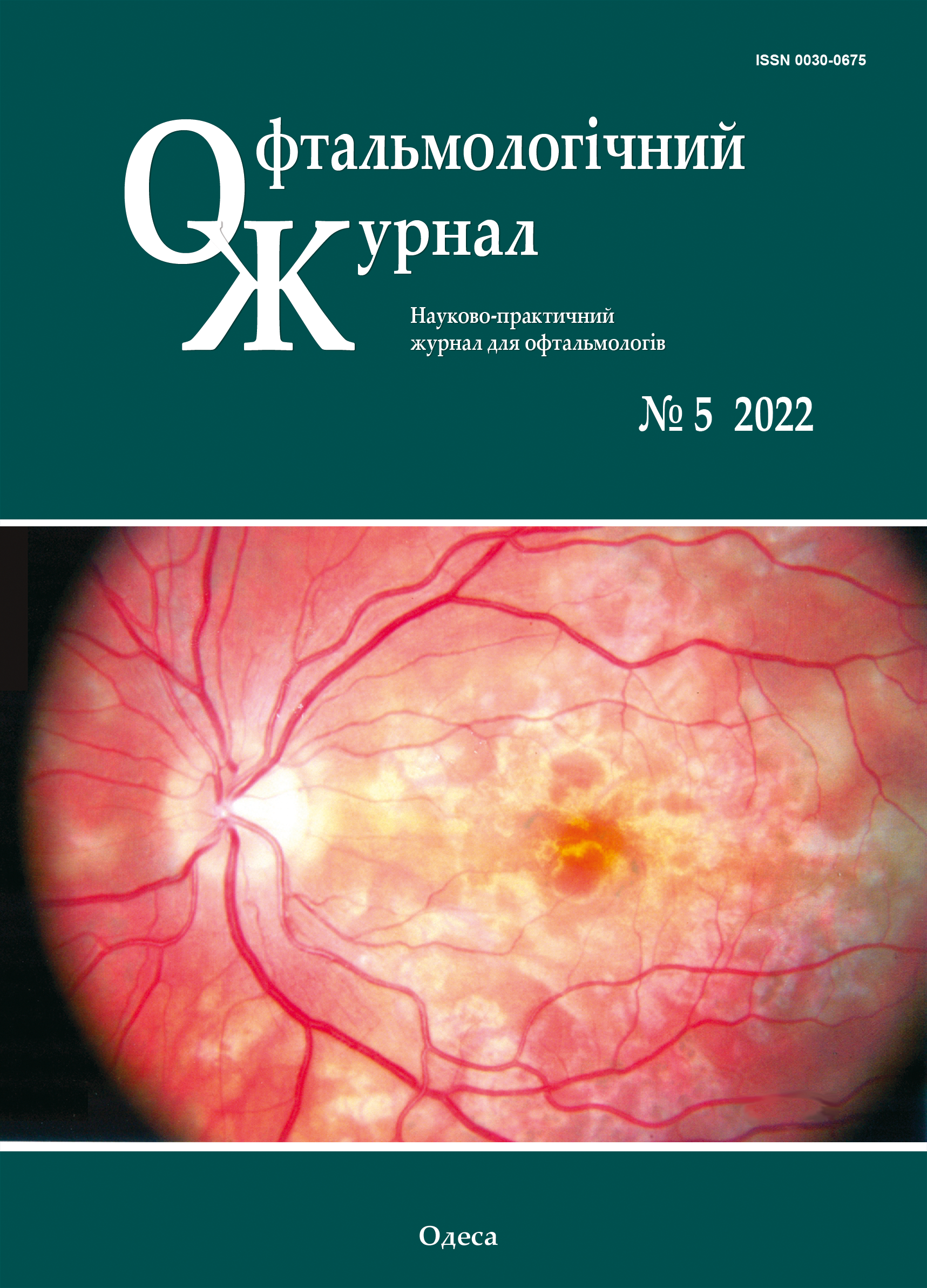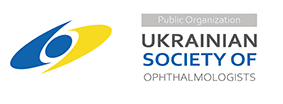Psychological testing of individuals in stressful situations: test-taking attitudes and perception of visual stimuli
DOI:
https://doi.org/10.31288/oftalmolzh202257180Keywords:
validity scales, psychometric analysis, stress, stressful situations, ophthalmologists, social and cognitive attitudes, visual perceptionAbstract
Background: Professional activities of individuals under stressful conditions affect their psychic processes and capability to work. The social-cognitive distortions developing under these conditions require a comprehensive assessment involving, particularly, quantitative assessment. The relevant psychometric instruments for detecting these distortions should be carefully psychometrically adapted.
Purpose: To analyze psychometrically the scales for assessing the test-taking attitudes in individuals under stressful situations, and to determine associations between response distortions and perceptual distortions.
Material and Methods: The study sample consisted of 286 eye care workers from the Filatov Institute of Eye Diseases and Tissue Therapy. The study was conducted with the use of the Minnesota Multiphasic Personality Inventory by Hathaway and McKinley and Wartegg Drawing Completion Test.
Results: We found that in stressful situations, social-cognitive distortions are accompanied by visual perceptual distortions. Particularly, we found that the desire of the responder to appear in a socially better light than he or she actually is, is associated with the tendency of faulty ignorance of large visual stimuli, which may be considered as co-manifestations of selective visual perception and response distortions. In addition, distortions in stressful situations were associated with both conscious and unconscious levels of psyche. We believe the modified L scale may be used in practice for assessing perceptual distortions and stress-related disorders like psychosomatic disorders and post-traumatic stress disorders.
References
1.Tsekhmister IV, Daniliuk IV, Rodina NV, Biron BV, Semeniuk NS. Developing a stress reaction inventory for eye care workers. J Ophthalmol (Ukraine). 2019;1(486):39-45. https://doi.org/10.31288/oftalmolzh201913945
2.Rodina NV, Biron BV, Ukhanova AI, Semenyuk NS, Kernas AV. Developing the interrole conflict scale for eye-care workers. J Ophthalmol (Ukraine). 2020;2(493):79-86. https://doi.org/10.31288/oftalmolzh202027986
3.Vlasova OI, Rodina NV, Tselikova YuO, Vornikova LK, Tykhonenko YuO. Modifying, standardizing and adapting the Adverse Childhood Experience Questionnaire. J Ophthalmol (Ukraine). 2022;1 (490):63-72. https://doi.org/10.31288/oftalmolzh202216372
4.Rodina NV, Dotsenko OIu, Kernas AV, Pereviazko LP, Vornikova LK. Developing a scale for assessing coping behavior in situations of danger. J Ophthalmol (Ukraine). 2022;3(506):65-73. https://doi.org/10.31288/oftalmolzh202236573
5.Alkhairy S, Siddiqui F, Mirza AA, Adnan S. Stress and Phacosurgeon: An Unavoidable Association. Pak J Ophthalmol. 2016; 32(4):221-5.
6.Semeniuk NS. [Psychological features of individual's life orientations]. [Cand Sc (Psychology) Thesis]. Odesa: Mechnikov National University; 2018. Ukrainian.
7.Richey LN, Doninger NA. A Comparison of Performance Validity Measures in Predicting MMPI-2 Lie Scale Results. Clin Neuropsychol. 2020 Feb;34(2):353-67. https://doi.org/10.1080/13854046.2019.1643922
8.Schichtdiagnostik: Der Zeichentest (WZT): Einführung in die experimentelle Graphoskopie [Layered diagnosis: The Drawing Test (WZT): An introduction to experimental graphoscopy]. Goettingen, Germany: Verlag Fuer Psychologie;1953. German.
9.Rodina NV. [Psychology of coping behavior: system simulation: a monograph]. Odesa: Bukaiev Vadim Viktorovych Press; 2011. Ukrainian.
10.Grønnerød SJ, Grønnerød C. The Wartegg Zeichen Test: A literature overview and a meta-analysis of reliability and validity. Psychol Assess. 2012 Jun;24(2):476-89. https://doi.org/10.1037/a0026100
11.Hathaway SR, McKinley JC. The Minnesota multiphasic personality inventory. Rev ed, 2nd printing. Minneapolis, Minnesota: University of Minnesota Press; 1943.
12.Berezin FB, Miroshnikov MP, Rozhanets EV. [Method of multifacetal personality study]. Moscow: Meditsina Press; 1976. Russian.
13.Cattell RB. The Scree Test for the Number of Factors. Multivariate Behav Res. 1966 Apr 1;1(2):245-76. https://doi.org/10.1207/s15327906mbr0102_10
14.Hair JF, Black WC, Babin BJ, Anderson RE. Multivariate Data Analysis. Prentice Hall: Upper Saddle River, New Jersey: Pearson Education; 2010.
15.Funder DC, Ozer DJ. Evaluating effect size in psychological research: Sense and non sense. Adv Meth Pract Psychol Sci. 2019; May;2(2):156-68. https://doi.org/10.1177/2515245919847202
16.Richey LN, Doninger NA. A Comparison of Performance Validity Measuresing Predicting MMPI-2 Lie Scale Results. Clin Neuropsychol. 2020 Feb;34(2):353-67. https://doi.org/10.1080/13854046.2019.1643922
17.Miagkov AIu. [Questionnaire techniques for identifying lie in sociological surveys]. [Vestnik Tambovskogo universiteta. Series: Humanities]. 2006; 1: 48-57. Russian.
18.Maslow AH. Motivation and personality. NewYork, NY: Harper & Row; 1954.
Downloads
Published
How to Cite
Issue
Section
License
Copyright (c) 2025 Б. В. Бірон, І. А. Булах, О. О. Волкова, Д. Ф. Ольховський, В. С. Родін

This work is licensed under a Creative Commons Attribution 4.0 International License.
This work is licensed under a Creative Commons Attribution 4.0 International (CC BY 4.0) that allows users to read, download, copy, distribute, print, search, or link to the full texts of the articles, or use them for any other lawful purpose, without asking prior permission from the publisher or the author as long as they cite the source.
COPYRIGHT NOTICE
Authors who publish in this journal agree to the following terms:
- Authors hold copyright immediately after publication of their works and retain publishing rights without any restrictions.
- The copyright commencement date complies the publication date of the issue, where the article is included in.
DEPOSIT POLICY
- Authors are permitted and encouraged to post their work online (e.g., in institutional repositories or on their website) during the editorial process, as it can lead to productive exchanges, as well as earlier and greater citation of published work.
- Authors are able to enter into separate, additional contractual arrangements for the non-exclusive distribution of the journal's published version of the work with an acknowledgement of its initial publication in this journal.
- Post-print (post-refereeing manuscript version) and publisher's PDF-version self-archiving is allowed.
- Archiving the pre-print (pre-refereeing manuscript version) not allowed.












